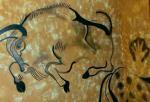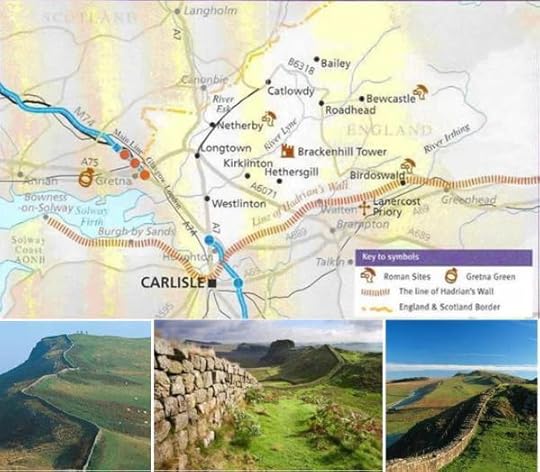Rose Anderson's Blog, page 65
April 17, 2013
The A to Z Challenge O for Oracle at Delphi
 I’m participating in the A to Z Challenge for the entire month of April, by posting an interesting topic for each letter of the alphabet. This excludes Sneak Peek Sundays. Follow this link to nearly 2000 other bloggers and authors.
I’m participating in the A to Z Challenge for the entire month of April, by posting an interesting topic for each letter of the alphabet. This excludes Sneak Peek Sundays. Follow this link to nearly 2000 other bloggers and authors.
The A to Z Challenge – participating blogs
Today’s Calliope’s Writing Tablet post is brought to you by the letter O — O for Oracle at Delphi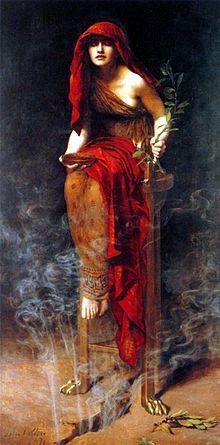
One day, a goatherd tending his flock on the slope of Mount Parnassus noticed his goats bleated strangely when grazing near a certain fissure in the mountainside. Drawing nearer, he was seized by divine presence. Unknown at the time, the mechanics of this prophetic spiritual pressence involved plate tectonics (the mobile rocky plates forming the earth’s surface) , namely the two that come together there and created the fissure — the Eurasian Continental Plate and the Aegean Plate.
As a side note: the site was originally dedicated to Poseidon the god of earthquakes aka The Earth Shaker. It was here along the fissure and through the porous rock that methane and ethane, two toxic hydrocarbon gasses, were released into the air.
This mountainside soon became one of the most important religious sites of the ancient world. A stone temple dedicated to the god Apollo was erected in a natural amphitheater. Inside the temple sat the Pythia – specially trained women who dedicated themselves to Apollo. These women were the Delphic Oracles.
A small alcove was built to catch the fumes from the fissure and the CO2 from the rich waters of a sacred spring deliberately channeled through the temple. After preparing her body through fasting and cleansing, she sat on her special tripod stool, breathed it all in, and soon fell into an exalted state of mind. Small wonder her body would be wracked with spasms as she fell into an altered state and responded to questions with prophetic wisdom directly inspired by Apollo himself. From this toxic trance, she gave advice.
It was said at times she was spot on in her prophecy. Occasionally she babbled and didn’t make sense. Other times her answers were clear, but went over her questioner’s head. It’s curious to note there were special days the divination was performed on. On at least one occasion the Pythia was forced from her divine schedule. Consequently, she went into seizures and died a few days later. I wonder about the significance of the schedule. How was it one day was safer than the next? The oracles spoke at Delphi for a thousand years.
<><><><><>
>>>I’m over at my satellite blog http://calliopeswritingtablet.blogspot.com/ From April 10th – 19th participating in the Authors in Bloom Blog Hop. Stop by. We have prizes!
Rose Anderson ~ Love Waits in Unexpected Places
I’m here…
Main Blog:
http://calliopeswritingtablet.com/
there…
Satellite Blogs:
http://calliopeswritingtablet.blogspot.com/
http://calliopesotherwritingtablet.blogspot.com/
http://theancillarymuse.blogspot.com/
http://anotherstoneunturned.blogspot.com/
Static pages:
http://thewitchywolfandthewendigo.blogspot.com/
http://leonardosbookoflove.blogspot.com/?zx=c1927211cb19cf0f
http://roseanderson4858.blog.com/
http://roseandersonromance.weebly.com/
http://roseanderson4858.wix.com/roseanderson–author
…and everywhere!
Amazon: http://www.amazon.com/Rose-Anderson
Pinterest: http://pinterest.com/FollowTheMuse/
Twitter: https://twitter.com/roseanderson_
Tumblr: http://author-roseanderson.tumblr.com/
Youtube: http://www.youtube.com//MusesWritingTablet
Facebook: https://www.facebook.com/rose.anderson
Google+: https://plus.google.com/rose.anderson
About.me: http://about.me/rose_anderson_author
Come say say hi!
Subscribe to this blog for the latest happenings. 
۞>>>>۞<<<<< ۞

April 16, 2013
The A to Z Challenge N for Necropolis
 I’m participating in the A to Z Challenge for the entire month of April, by posting an interesting topic for each letter of the alphabet. This excludes Sneak Peek Sundays. Follow this link to nearly 2000 other bloggers and authors.
I’m participating in the A to Z Challenge for the entire month of April, by posting an interesting topic for each letter of the alphabet. This excludes Sneak Peek Sundays. Follow this link to nearly 2000 other bloggers and authors.
The A to Z Challenge – participating blogs
Today’s Calliope’s Writing Tablet post is brought to you by the letter N — N for Necropolis.
Necropolis literally means City of the Dead. No, nothing to do with zombies and other dystopian denizens on the graveyard shift. I’m referring to large cemeteries. From the curious London Necropolis Railway (yes, you read that right), to the Great Pyramid in Egypt, and everything in between, man has obviously contemplated death. I suppose I do too. I love old cemeteries for their history, artistry, symbolism, and tranquility. The romance writer I am recognizes the test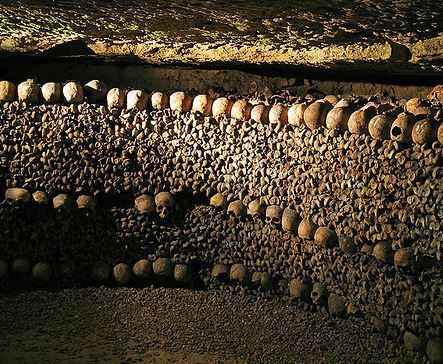 ament to love and regard found there.
ament to love and regard found there.
Upon visiting Arlington National Cemetery in Washington D.C., I was struck by two things. First of all, I found it emotionally moving and weeped as I walked. Secondly, at 624 acres, it was huge. The grand size is small compared to Iraq’s 1485.5 acre Waadi-us-Salaam. That necropolis may be the largest in the world. We’ve added to both in the last ten years, and that is incredibly sad.
While researching the Paris Catacombs for my magnum opus (my huge unfinished, 500k word, 5-volume work of fiction), I was struck by the fact many of these historical resting places have the bones of people who succumbed to TB, smallpox, plague, and other infectious diseases. Hold that thought.
Many years ago I came upon a story of an outbreak of meningitis at a new school. What was discovered was the school playground was built on top of an old cemetery, and it just so happened this cemetery held the bodies of people who died during a meningitis outbreak many decades before. So I’m left to wonder about the tourists who walk the catacombs and churn boney dust into the air with each step. Do these pathogens have any oomph left in them?
And that’s why I write!
So to get back on track, here are a few definitions:
Cemetery is the most familiar final resting place creatively named by the Greeks for the Sleeping Place.
Catacombs are underground cemeteries, often consisting of tunnels and rooms with recesses for coffins and larger tombs.
An Ossuary is a place to store bones after the body is removed from its temporary grave. They’re often arranged like artful mosaics.
Columbariuma are places for the public storage of cinerary urns. The Roman columbariums were highly decorated places of peace and contemplation.
A Mausoleum is a stately and magnificent tomb. Think Taj Mahal.
A Crypt is a vault usually found under the floor of a shrine or church.
Charnel Houses are repositories for those odd bones that appear when new graves are dug.
A Grave Field is typically a prehistoric Bronze Age or Iron Age cemetery. No markers above ground to show you where.
An Urnfield is exactly what the name implies — cremated remains buried in urns. Apparently, they belong to a specific culture in Bronze Age Europe.
A Stupa holds ashes too.
A Tumulus is a mound grave.
And so are some Effigy and Burial Mounds.
Ship Burials are fairly self explanatory too. The boat is buried along with its captain, the odd crewman, and a load of goods.
The Chariot Burials are basically the same, with the horses of course.
As research goes, sometimes one thing leads to another. My research turned up some very unusual things. As you might imagine, the writer in me has squirreled it ALL away for later. 
The Chapel of All Saints in the Czech Republic holds the bones of approximately 40,000 people.
And here’s National Geographic’s take on it.
http://news.nationalgeographic.com/news/2008/07/080701-ossuary-video-ap.html
HISTORY OF THE CATACOMBS OF PARIS I couldn’t translate this page from French to English today. Sometimes you can, other times no. It’s worth a try. Click on the flag for the language you want to read it in. http://www.carrieres.explographies.com/
Here’s a very cool virtual tour http://www.triggur.org/cata/
And on a theme, if you’re into genealogy and haven’t seen the Find-A-Grave site yet, here’s the link http://www.findagrave.com/
I’ll save Sky Burials, Tree burials, bog burials, plastination and mummification for next year’s A to Z Challenge. 
There’s something to be said for that Infinity mushroom suit (If you missed that post, scroll back to letter I.)
<><><><><>
>>>I’m over at my satellite blog http://calliopeswritingtablet.blogspot.com/ From April 10th – 19th participating in the Authors in Bloom Blog Hop. Stop by. We have prizes!
Rose Anderson ~ Love Waits in Unexpected Places
I’m here…
Main Blog:
http://calliopeswritingtablet.com/
there…
Satellite Blogs:
http://calliopeswritingtablet.blogspot.com/
http://calliopesotherwritingtablet.blogspot.com/
http://roseanderson4858.blog.com/
http://theancillarymuse.blogspot.com/
http://roseandersonromance.weebly.com/
http://roseanderson4858.wix.com/roseanderson–author
…and everywhere!
Amazon: http://www.amazon.com/Rose-Anderson
Pinterest: http://pinterest.com/FollowTheMuse/
Twitter: https://twitter.com/roseanderson_
Tumblr: http://author-roseanderson.tumblr.com/
Youtube: http://www.youtube.com//MusesWritingTablet
Facebook: https://www.facebook.com/rose.anderson
Google+: https://plus.google.com/rose.anderson
About.me: http://about.me/rose_anderson_author
Come say say hi!
Subscribe to my blog for the latest happenings. 
۞>>>>۞<<<<< ۞


April 15, 2013
The A to Z Challenge M for Magna Mater
 And I’m participating in the A to Z Challenge for the entire month of April. I’m posting an interesting topic for each letter of the alphabet. This excludes Sneak Peek Sundays. Follow this link to nearly 2000 other bloggers and authors.
And I’m participating in the A to Z Challenge for the entire month of April. I’m posting an interesting topic for each letter of the alphabet. This excludes Sneak Peek Sundays. Follow this link to nearly 2000 other bloggers and authors.
The A to Z Challenge – participating blogs
Today’s Calliope’s Writing Tablet post is brought to you by the letter M — M for Magna Mater.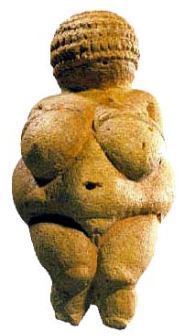 When I imagine a primordial goddess, the first image that comes to mind is the Venus of Willendorf. Plumped by plenty and filled with fecundity, her wide hips and bountiful breasts declare her fertility and suggest her sustenance. She is the Magna Mater – The Great Mother.
When I imagine a primordial goddess, the first image that comes to mind is the Venus of Willendorf. Plumped by plenty and filled with fecundity, her wide hips and bountiful breasts declare her fertility and suggest her sustenance. She is the Magna Mater – The Great Mother.
To date, hundreds of similar figures made of stone and bone and clay have been discovered all over the world. Unfortunately, we can only speculate on their exact purpose. The earliest Mothers are faceless. Such anonymity suggests she was beyond personification. Many wear the scars of motherhood on hips, belly, and breasts in acknowledgement of cycles – the cycles of life and birth – an undeniable symbol of the earth itself.
These Great Mothers, reverently called the Venus figures, span both Paleolithic and Neolithic eras. Some, like the Hohle Fels mammoth-ivory Venus, date back more 30,000 years. Older still are the chevrons (zigzags, M, or V patterns) in 40,000-year-old Neanderthal artworks. These too represent woman, and are often depicted beside the wavy lines symbol for water.
As a storyteller, I can see that The Great Mother never really left the scene. Donning the clothes of each region, she simply modernized and became the Goddesses worshiped in ancient civilizations.
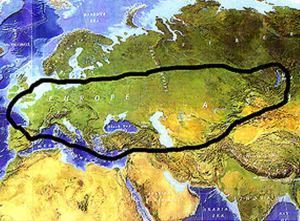
Approximate Venus distribution across Europe and the Mediterranean
This youtube video leads to a terrific education site called Education Portal. I recommend taking a look.
http://education-portal.com/
~ Other information worth your time ~
Individual images with descriptions
http://donsmaps.com/venus.html
A terrific poster
http://goddesstimeline.com/wp-content/uploads/2012/08/MainTimeline.jpg
An interesting conversation with Constance Tippet regarding the Magna Mater and women in society.
http://goddesstimeline.com/wp-content/uploads/2012/08/Constance_Tippett_BlogTalkRadio_Interview.mp3
<><><><><>
>>>I’m over at my satellite blog http://calliopeswritingtablet.blogspot.com/ From April 10th – 19th participating in the Authors in Bloom Blog Hop. Stop by. We have prizes!
Rose Anderson ~ Love Waits in Unexpected Places
I’m here…
Main Blog:
http://calliopeswritingtablet.com/
there…
Satellite Blogs:
http://calliopeswritingtablet.blogspot.com/
http://calliopesotherwritingtablet.blogspot.com/
http://roseanderson4858.blog.com/
http://theancillarymuse.blogspot.com/
http://roseandersonromance.weebly.com/
http://roseanderson4858.wix.com/roseanderson–author
…and everywhere!
Amazon: http://www.amazon.com/Rose-Anderson
Pinterest: http://pinterest.com/FollowTheMuse/
Twitter: https://twitter.com/roseanderson_
Tumblr: http://author-roseanderson.tumblr.com/
Youtube: http://www.youtube.com//MusesWritingTablet
Facebook: https://www.facebook.com/rose.anderson
Google+: https://plus.google.com/rose.anderson
About.me: http://about.me/rose_anderson_author
Come say say hi!
Subscribe to my blog for the latest happenings. 
۞>>>>۞<<<<< ۞


April 13, 2013
It’s Sneak Peek Sunday!
 It’s
Sneak Peek Sunday!
It’s
Sneak Peek Sunday!
Here’s my Sneak Peek from
Loving Leonardo
Setting the Stage:
Nicolas and Ellie are on the way to Venice to track down Leonardo da Vinci’s book. After so many days in close proximity and comfortable in their compatibility, the two quickly become friends. They also realized this marriage of convenience has more dimension than either imagined. After acknowledging their surprising attraction to one another, they meet Luca for the first time and find a kindred spirit.
My 6-paragraph peek:
Ellie and I weren’t the only passengers to arrive as the last bell struck. People filed through the dining room’s double doors to take their seats. This congestion would lessen as people became accustomed to how long it took them to ready themselves between the ring of the first and last bell.
More so than the other meals aboard, dinners were often a mingling affair. We sat with the Ormonts and the Brookses again while the Dutch brother and sister took their seats at the table next to us, the sister involved in a rather animated conversation with a new friend. Jerone did smile when I looked his way. His eye jerked toward the door in open invitation. Despite the twinge that silent proposal sent to my loins, my smile widened as my eye jerked to my wife. He gave me a pretty moue, his brief pout good-natured. It was a long voyage after all.
I sat Ellie and pulled a chair for Mrs. Ormont as she waited for her husband. A moment later, Colonel Ormont brought the historian to our table and made introductions. Luca Franco, late of Florence, was a Professor of Antiquities returning from London. I found the Italian quite the attractive fellow, impeccably dressed as he was. When in the presence of true beauty, my mind often imagines the person unclothed as the artists of the ages might have seen him. Sitting at my table was a statue carved in marble by Gian Lorenzo Bernini; an artist known for his remarkable ability to capture the essence of a narrative moment. And I found Luca Franco to be exactly that — a moment indelibly captured in time — a moment of meeting the mind could revisit in its entirety.
From every angle, he was beautifully made: black-haired, of medium build, and physically fit. He possessed a warm hue to his skin, his lineage no doubt stamped centuries past by the darker Moors or Turks. In startling contrast, and quite handsomely framed by black lashes, he had striking eyes the color one might see in a shadow falling across snow — not quite sky blue nor exactly steel gray, but a blending of the two in gradated rings.
I rose to shake his hand and felt the unmistakable current of compatibility. If this man weren’t forward in his mutual attraction, it was there nonetheless. I watched him bow over the ladies’ hands and found it curious that he lingered over Ellie’s fingers a tad longer. It made me smile. I had the distinct impression I was in the presence of a fellow dual-nature like myself.
The regular chit-chat occurring over the courses was quite enjoyable. There was a part of me, however, that would have been content to take my wife back to our stateroom and lose myself in the wonder of my new-found truth. Like the great navigators in ages past, the thought of uncharted lands titillated my imagination. I was anxious to explore her, anxious to immerse in her heated places and scent, and smell and taste every part of her. I wanted to lose myself in the hedonistic feast of the senses I knew I’d find.
Loving Leonardo
by Rose Anderson
A Victorian polyamorous love story, with a touch of
reader-interactive art history.
A Two Lips Reviews Recommended Read!
A CataRomance Sensual Reads
Reviewer’s Choice Winner for Historical Romance!
http://www.amazon.com/dp/B009LS3H6Q
~And the story continues April 2013 ~
Loving Leonardo – The Quest
For once you have tasted flight you will walk the earth
with your eyes turned skywards, for there you have been
and there you will long to return.
~ Leonardo da Vinci
۞>>>>۞<<<<۞

I’m participating in the A to Z Challenge. For 26 days in April and excluding Sundays (which I’ll be using for the Sneak Peek), I’ll write a post for each letter of the alphabet. Follow this link on the banner above to nearly 2000 other bloggers and authors. Scroll down to catch up on letters A to L.
Monday, letter M!
۞>>>>۞<<<<۞
Rose Anderson – Love Waits in Unexpected Places
BUY eBOOKS & PAPERBACK | TWITTER | GOOGLE+
TUMBLR | PINTEREST | FACEBOOK
۞>>>>۞<<<<۞
۞>>>>۞<<<<۞


April 12, 2013
The A to Z Challenge L for Lascaux
 And I’m participating in the A to Z Challenge for the entire month of April. I’m posting an interesting topic for each letter of the alphabet. This excludes Sneak Peek Sundays. Follow this link to nearly 2000 other bloggers and authors.
And I’m participating in the A to Z Challenge for the entire month of April. I’m posting an interesting topic for each letter of the alphabet. This excludes Sneak Peek Sundays. Follow this link to nearly 2000 other bloggers and authors.
The A to Z Challenge – participating blogs
Today’s Calliope’s Writing Tablet post is brought to you by the letter L — L for Lascaux.
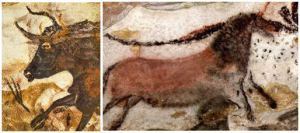 Art stems from man’s capacity to interpret and give meaning to his surroundings. The earliest evidence of this can be found in caves in France and Spain. It was in the 1940′s when 17 -year-old Marcel Ravidat and three of his companions stumbled upon one of the greatest paleolithic finds in the world — The cave of Lascaux.
Art stems from man’s capacity to interpret and give meaning to his surroundings. The earliest evidence of this can be found in caves in France and Spain. It was in the 1940′s when 17 -year-old Marcel Ravidat and three of his companions stumbled upon one of the greatest paleolithic finds in the world — The cave of Lascaux.
Well-respected archaeologist Abbé Henri Breuil was one of the first to study the site. Along with bone fragments, oil lamps, and other artifacts, he found nearly 2000 artworks — paintings done with mineral pigments and engraved images of horses, bison, aurochs, mammoths, ibex, deer, bears, lions, and wolves. It is believed such images served spiritual needs or ceremonial purpose. Research puts most of the artwork done in Lascaux cave at around 15,000 ago. The oldest such paleolithic cave paintings are found at Chauvet cave in France. Discovered in 1994, these works were painted at least 32,000 years ago.
For the next few decades following WWII, the Lascaux cave was modified and opened to the public. It closed in 1963 after it was determined the carbon dioxide of thousands of breaths had created an environment of mold, bacteria, and fungi that were eating away at the precious artworks.
<><><><><>
The artworks of Lascaux so tickled my fancy, that many years ago I recreated a cave scene on the walls of a small room in my home. Just another layer of creatively from a fanciful mind. 
Take the virtual tour.
http://www.lascaux.culture.fr/?lng=en#/fr/00.xml
Then stop at Cauvet cave.
http://www.culture.gouv.fr/culture/arcnat/chauvet/en/
For $2.99 watch The cave of Forgotten Dreams on youtube
It’ll blow your mind.
https://www.youtube.com/movie?v=l7XTERdQZf8
>>>I’m over at my satellite blog http://calliopeswritingtablet.blogspot.com/ From April 10th – 19th participating in the Authors in Bloom Blog Hop. Stop by. We have prizes!
>>>You can find me at my other satellite blog from April 12th -14th for The Let’s Get Lucky Blog Hop. http://calliopesotherwritingtablet.blogspot.com/
Rose Anderson ~ Love Waits in Unexpected Places
I’m here…
Main Blog:
http://calliopeswritingtablet.com/
there…
Satellite Blogs:
http://calliopeswritingtablet.blogspot.com/
http://calliopesotherwritingtablet.blogspot.com/
http://roseanderson4858.blog.com/
http://theancillarymuse.blogspot.com/
http://roseandersonromance.weebly.com/
http://roseanderson4858.wix.com/roseanderson–author
…and everywhere!
Amazon: http://www.amazon.com/Rose-Anderson
Pinterest: http://pinterest.com/FollowTheMuse/
Twitter: https://twitter.com/roseanderson_
Tumblr: http://author-roseanderson.tumblr.com/
Youtube: http://www.youtube.com//MusesWritingTablet
Facebook: https://www.facebook.com/rose.anderson
Google+: https://plus.google.com/rose.anderson
About.me: http://about.me/rose_anderson_author
Come say say hi!
Subscribe to my blog for the latest happenings. 
۞>>>>۞<<<<< ۞


The A to Z Challenge – K for Krakatoa
 And I’m participating in the A to Z Challenge for the entire month of April. I’m posting an interesting topic for each letter of the alphabet. This excludes Sneak Peek Sundays. Follow this link to nearly 2000 other bloggers and authors.
And I’m participating in the A to Z Challenge for the entire month of April. I’m posting an interesting topic for each letter of the alphabet. This excludes Sneak Peek Sundays. Follow this link to nearly 2000 other bloggers and authors.
The A to Z Challenge – participating blogs
Today’s Calliope’s Writing Tablet post is brought to you by the letter K — K for Krakatoa.
It began that May in 1883. In the Sunda Strait between Java and Sumatra, a series of volcanic eruptions rocked western Indonesia. But one eruption mid-summer, changed the face of the globe.
It came with a paroxysmal explosion – that is, a sudden and extremely violent explosion, that blasted the island apart with the force of 13,000 atomic bombs, and hurled a trillion cubic feet of pyroclastic (super-heated) rock, pumice, boulders, and ash into the air. The sound of Krakatoa’s eruption was heard 3,000 miles away in Australia, and is considered to be the loudest sound the world has ever known. It even ruptured eardrums 10 miles away. Many were left deaf.
The release of volcanic pressure was followed by the cone’s collapse. When it formed a submerged caldera, it unleashed powerful tsunamis 136 feet high. According to different sources, the whole event killed between 36,000 and 120,000 people and destroyed 165 villages and towns. For months ships traveling across the Indian Ocean saw skeletons floating rafts of volcanic pumice. Most washed ashore on the east coast of Africa.
Ash clouded the sky and changed the weather around the world. It’s been estimated that 1% of the sunlight bathing the planet was blocked for two years. The resulting decrease in absorbed radiation caused the upper layers of the oceans to cool and thereby contract. This caused the sea level to drop worldwide. The lingering ash painted sunsets so red and ominous, it looked as if the sky was ablaze. For three months, firemen were regularly called out in New York City and nearby towns thinking they had evening fires to fight. Holy cow.
Listen as author Simon Winchester discusses his book Krakatoa with NPR’s Melissa Block. All I can say is wow.
http://www.npr.org/templates/story/story.php?storyId=1234606
>>>I’m over at my satellite blog http://calliopeswritingtablet.blogspot.com/ From April 10th – 19th participating in the Authors in Bloom Blog Hop. Stop by. We have prizes!
>>>Today starts The Let’s Get Lucky Blog Hop. You can find me at my other satellite blog from April 12th -14th. http://calliopesotherwritingtablet.blogspot.com/
Rose Anderson ~ Love Waits in Unexpected Places
I’m here…
Main Blog:
http://calliopeswritingtablet.com/
there…
Satellite Blogs:
http://calliopeswritingtablet.blogspot.com/
http://calliopesotherwritingtablet.blogspot.com/
http://roseanderson4858.blog.com/
http://theancillarymuse.blogspot.com/
http://roseandersonromance.weebly.com/
http://roseanderson4858.wix.com/roseanderson–author
…and everywhere!
Amazon: http://www.amazon.com/Rose-Anderson
Pinterest: http://pinterest.com/FollowTheMuse/
Twitter: https://twitter.com/roseanderson_
Tumblr: http://author-roseanderson.tumblr.com/
Youtube: http://www.youtube.com//MusesWritingTablet
Facebook: https://www.facebook.com/rose.anderson
Google+: https://plus.google.com/rose.anderson
About.me: http://about.me/rose_anderson_author
Come say say hi!
Subscribe to my blog for the latest happenings. 
۞>>>>۞<<<<< ۞


April 10, 2013
The A to Z Challenge – J for Jungian Archetypes
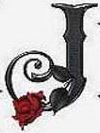 Here’s another post for the A to Z Challenge. All through the month of April (excluding Sneak Peek Sundays), I’ll write a post for each letter of the alphabet. Follow this link to nearly 2000 other bloggers and authors.
Here’s another post for the A to Z Challenge. All through the month of April (excluding Sneak Peek Sundays), I’ll write a post for each letter of the alphabet. Follow this link to nearly 2000 other bloggers and authors.
The A to Z Challenge – participating blogs
Today’s Calliope’s Writing Tablet post is brought to you by the letter J — J for Jungian Archetypes.
Many years ago, while researching for my as yet unnamed, 5-book, 500,000 word, Magnum Opus, I read Joseph Campbell’s The Hero With a Thousand Faces. The book discussed the journey of the archetypal heroes found in world mythologies. (One modern example of the archetypal hero is Harry Potter). Campbell’s book directed me to look into Jungian Archetypes.
What are they exactly? To begin, the origin of the word archetype comes from the Greek archétypon, which means first-molded. In essence, this is the original model of a person – a prototype which others emulate. In psychology, an archetype is a model of personality or behavior universally recognizable by all. In works of fiction, these become the personality traits for the characters.
After splitting from his one-time colleague Sigmund Freud, Swiss psychotherapist and psychiatrist, Carl Jung, founded analytical psychology. It was Jung who named the personality traits we all know today – the outgoing extravert and the quiet introvert, for example. But he discovered there were more facets to human personality than just those two traits. Jung created some of the best known psychological concepts of all time, one of which was the archetype. In some respects, it was his interest in world folklore and literature spanning thousands of years, (including his study of prehistoric artworks), that led him to categorize.
Here’s what he came up with. I tap into these traits when creating my characters for my stories. See how many make instant connections in your mind.
I’ll start with the ego and its four functions: Sensation, Thinking, Feeling, and Intuition. From there we have:
The Self: the regulating center of the psyche. The whole, unified consciousness and unconscious of a person.
The Shadow: the opposite of the ego image. Contains qualities the ego does not identify with but still possesses. The part of the unconscious mind consisting of instincts, repressed weaknesses, and shortcomings.
The Anima: the feminine image in a man’s psyche, aka, the unconscious feminine qualities that a male possesses.
The Animus: the masculine image in a woman’s psyche, aka the unconscious masculine qualities that a woman possesses.
The Persona: how we present ourselves to the world.
Within these, Jung determined the archetypes were limitless. Here are a few recurring ones:
The Child: or innocent, is more likely to suffer at the hands of others
The Hero: comes from a position of weakness, but in the face of danger or adversity will display courage and self-sacrifice for some greater good.
The Great Mother: the bountiful embodiment of the Earth. Refers to any mothering goddess associated with motherhood, fertility, or creation.
The Wise Old Man: usually a profound philosopher, who uses personal knowledge of the world to teach wisdom and sound judgment.
The Trickster: intentionally breaks the rules but unintentionally gets positive effects out of it.
The Devil: displays characteristics of pure evil. Typically self-centered and power-hungry, only interested in achieving personal goals.
The Scarecrow: Mysteriously knows everything about the world, yet has had no interaction with the world to gain that knowledge.
The Mentor: Are often imaginative people who are more intrigued by future possibilities than concerned with the here and now. A great source of inspiration to the people around them.
I write intelligent characters because I appreciate intelligence. The heroines in all of my stories are strong competent women. All of my equally sharp heroes walk through their world confident and unashamed to be tender and kind-hearted. That’s what makes both interesting and loveable! Here’s an intriguing clip about the Anima and Animus ~
What’s your type? Take the test and find out!
http://www.humanmetrics.com/cgi-win/JTypes1.htm
Rose Anderson ~ Love Waits in Unexpected Places
I’m here…
Main Blog:
http://calliopeswritingtablet.com/
there…
Satellite Blogs:
http://calliopeswritingtablet.blogspot.com/ From April 10th – 19th I’m at my other blog participating in the Authors in Bloom Blog Hop. Stop by. We have prizes!
http://calliopesotherwritingtablet.blogspot.com/
http://roseanderson4858.blog.com/
http://theancillarymuse.blogspot.com/
http://roseandersonromance.weebly.com/
http://roseanderson4858.wix.com/roseanderson–author
…and everywhere!
Amazon: http://www.amazon.com/Rose-Anderson
Pinterest: http://pinterest.com/FollowTheMuse/
Twitter: https://twitter.com/roseanderson_
Tumblr: http://author-roseanderson.tumblr.com/
Youtube: http://www.youtube.com//MusesWritingTablet
Facebook: https://www.facebook.com/rose.anderson
Google+: https://plus.google.com/rose.anderson
About.me: http://about.me/rose_anderson_author
Come say say hi!
Subscribe to my blog for the latest happenings. 
۞>>>>۞<<<<< ۞


The A to Z Challenge – I for Infinity Mushroom
 I’m participating in the A to Z Challenge. All through the month of April (excluding Sundays which I’ll be using for the Sneak Peek), I’ll write a post for each letter of the alphabet. Follow this link to nearly 2000 other bloggers and authors.
I’m participating in the A to Z Challenge. All through the month of April (excluding Sundays which I’ll be using for the Sneak Peek), I’ll write a post for each letter of the alphabet. Follow this link to nearly 2000 other bloggers and authors.
The A to Z Challenge – participating blogs
Today’s Calliope’s Writing Tablet post is brought to you by the letter I — I for Infinity Mushroom.
Writers understand a fundamental truth — that next creative spark often comes from something that has captured the imagination. The impetus could be something simple like a color, texture, or scent. It could come from a song, a breeze, or materialize out of a conversation with friends. My mind is like that warehouse scene at the end of the first Indiana Jones movie. I never know what my brain will want to store away for later. I love to learn things and often add such imaginative seeds to my stories. I’m a complex collector. What’s more, I have a very good sense of wonder… if I do say so myself.  Out of all the weird pieces of information shelved in my head, this one has to be one of the oddest. But in its oddness, it makes sense. Judge for yourself.
Out of all the weird pieces of information shelved in my head, this one has to be one of the oddest. But in its oddness, it makes sense. Judge for yourself.
According to the Centers for Disease Control, we have 287 toxic chemicals in our body – 180 cause cancer in humans, 217 are toxic to the brain and nervous system, and 208 cause birth defects. From pesticides to preservatives, we’re loaded. When we die, our bodies release this garbage into the environment where it continues to pass on its nastiness to the soil, the things growing in the soil, the creatures eating those things grown in the soil and the ground water.
Enter visionary Jae Rhim Lee. Lee is training fungi to consume her own body tissue. Small amounts of skin, hair, nails, blood, bone, fat, tears, urine, feces, and sweat have been put in petri dishes and mushroom cultures grown on them. Why? To create mushrooms that can be used in what’s called Decompiculture — in other words, using mushrooms to decompose the human body quickly, rather than allowing those hazardous chemicals stored in the body, and the extra toxins from embalming, to leach into the ground.
I think it’s a grand idea. It’s also a great spark for that next sci-fi or horror novel.
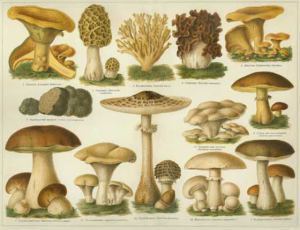 Mushrooms might very well clean up our act on the planet. Mycologist Paul Stamets is a leading researcher on the use of mushrooms in bioremediation (the use of microorganisms like fungi to clean up pollutants). He says they can break down even the most stubborn pollutants like oil spills. He’s figured out that fungi transform contaminants into benign carbon dioxide and water, and that common wood-decay fungi, the ones that grow on trees, are particularly good at breaking down the toxic components of petroleum. And after that work is done, the mushrooms are edible!
Mushrooms might very well clean up our act on the planet. Mycologist Paul Stamets is a leading researcher on the use of mushrooms in bioremediation (the use of microorganisms like fungi to clean up pollutants). He says they can break down even the most stubborn pollutants like oil spills. He’s figured out that fungi transform contaminants into benign carbon dioxide and water, and that common wood-decay fungi, the ones that grow on trees, are particularly good at breaking down the toxic components of petroleum. And after that work is done, the mushrooms are edible!
Authors, just so you know, the Decompiculture mushrooms are edible too. Now there’s a novel in the making. Stephan King might have a go.
More on the groundbreaking work of Paul Stamets:
http://www.fungi.com/
More about the Infinity Burial Project and the Infinity Mushroom:
http://infinityburialproject.com/
Rose Anderson ~ Love Waits in Unexpected Places
I’m here…
Main Blog:
http://calliopeswritingtablet.com/
there…
Satellite Blogs:
http://calliopeswritingtablet.blogspot.com/ From April 10th – 19th I’m here participating
in the Authors in Bloom Blog Hop. Stop by. We have prizes!
http://calliopesotherwritingtablet.blogspot.com/
http://roseanderson4858.blog.com/
http://theancillarymuse.blogspot.com/
http://roseandersonromance.weebly.com/
http://roseanderson4858.wix.com/roseanderson–author
…and everywhere!
Amazon: http://www.amazon.com/Rose-Anderson
Pinterest: http://pinterest.com/FollowTheMuse/
Twitter: https://twitter.com/roseanderson_
Tumblr: http://author-roseanderson.tumblr.com/
Youtube: http://www.youtube.com//MusesWritingTablet
Facebook: https://www.facebook.com/rose.anderson
Google+: https://plus.google.com/rose.anderson
About.me: http://about.me/rose_anderson_author
Come say say hi!
Subscribe to my blog for the latest happenings. 
۞>>>>۞<<<<< ۞


April 9, 2013
The A to Z Challenge – H for Hadrian’s Wall
 As a nice break from writing romance, I’m participating in the A to Z Challenge. The information hound I am is really enjoying it too! For the month of April, I’ll write a post for each letter of the alphabet. This excludes Sundays, but I’ll use those for the Sneak Peek. Follow this link to nearly 2000 other bloggers and authors.
As a nice break from writing romance, I’m participating in the A to Z Challenge. The information hound I am is really enjoying it too! For the month of April, I’ll write a post for each letter of the alphabet. This excludes Sundays, but I’ll use those for the Sneak Peek. Follow this link to nearly 2000 other bloggers and authors.
The A to Z Challenge – participating blogs
Today’s Calliope’s Writing Tablet post is brought to you by the letter H — H for Hadrian’s Wall.
Between northern England and Scotland, running east and west for about 74 miles, Hadrian’s Wall marked the most northerly frontier of the Roman Empire. Named for Emperor Hadrian, it was an attempt to establish a defendable border between southern civilized Britain and the unconquered north. Manned by Roman troops and non-Roman citizen units, the barrier kept the barbarians away. These fearsome peoples were also known as the Picts or Caledonians. You might know them as the lowland Scots.
The initial construction took approximately six years, though expansions were made as need presented itself. Like the Great Wall of China, the wall was constructed of the ready materials of the area. Forty-one miles of the wall was built of stone, the rest of turf. Along the way, ditches were dug and ramparts raised, milecastles were added to house soldiers, and turrets were constructed to defend from.
The fall of the Roman Empire in the 5th century, ushered in the beginning of the Dark Ages. Large sections of the wall fell to ruin, and the necessity, to obsolescence. Over time, portions were scavenged for building materials. This piece of Roman occupation was designated a UNESCO World Heritage site in 1987.
Rose Anderson ~ Love Waits in Unexpected Places
I’m here…
Main Blog:
http://calliopeswritingtablet.com/
there…
Satellite Blogs:
http://calliopeswritingtablet.blogspot.com/
http://roseanderson4858.blog.com/
http://roseandersonromance.weebly.com/
http://roseanderson4858.wix.com/roseanderson–author
…and everywhere!
Amazon: http://www.amazon.com/Rose-Anderson
Pinterest: http://pinterest.com/FollowTheMuse/
Twitter: https://twitter.com/roseanderson_
Tumblr: http://author-roseanderson.tumblr.com/
Youtube: http://www.youtube.com//MusesWritingTablet
Facebook: https://www.facebook.com/rose.anderson
Google+: https://plus.google.com/rose.anderson
About.me: http://about.me/rose_anderson_author
Come say say hi!
Subscribe to my blog for the latest happenings. 
۞>>>>۞<<<<< ۞


April 8, 2013
The A to Z Challenge – G for Gobekli Tepe
 I’m participating in the A to Z Challenge. For nearly the entire month of April, I’ll write a post for each letter of the alphabet. This excludes Sundays. I’ll use those for the Sneak Peek. Follow this link to nearly 2000 other bloggers and authors.
I’m participating in the A to Z Challenge. For nearly the entire month of April, I’ll write a post for each letter of the alphabet. This excludes Sundays. I’ll use those for the Sneak Peek. Follow this link to nearly 2000 other bloggers and authors.
The A to Z Challenge – participating blogs
Today’s Calliope’s Writing Tablet post is brought to you by the letter G — G for Gobekli Tepe.
In the 1960s, Turkish and American anthropologists surveyed the Southeastern Anatolia Region of Turkey. In a land studded with history, they came upon limestone slabs jutting a few inches out of the ground and at a glance determined they were Byzantine grave markers. In other words, just another historical site in an area full of archeological sites.
In 1994, Klaus Schmidt of the German Archaeological Institute of Istanbul read the initial findings. Visiting the site, he recognized something much older. The simple limestone-slab “Byzantine grave markers” turned out to be the very tops of intricately carved pillars, some standing 10 feet tall. Today this Neolithic site is called Gobekli Tepe and its discovery has rocked the known history of civilization off its comfortable foundation.
Believed to be a temple built long before the wheel was invented, Gobekli Tepe is at least 14,000 years old - older than the oldest structures in Egypt, older than Stonehenge, and older than agriculture. The most puzzling piece of information – the site was intentionally buried! That’s more than 30 acres of monuments intentionally covered under one basketful of dirt at a time. Just imagine the scope of that undertaking.
I’ve been following the story since it came to light in the 1990’s. As an author, this mystery certainly speaks to me. New information arises as more of this deliberately hidden site is excavated. It’s definitely news worth following. You can start with these:
http://ghn.globalheritagefund.org/explore.php?id=1327
http://www.smithsonianmag.com/history-archaeology/gobekli-tepe.html
Rose Anderson ~ Love Waits in Unexpected Places
I’m here…
Main Blog:
http://calliopeswritingtablet.com/
there…
Satellite Blogs:
http://calliopeswritingtablet.blogspot.com/
http://roseanderson4858.blog.com/
http://roseandersonromance.weebly.com/
http://roseanderson4858.wix.com/roseanderson–author
…and everywhere!
Amazon: http://www.amazon.com/Rose-Anderson
Pinterest: http://pinterest.com/FollowTheMuse/
Twitter: https://twitter.com/roseanderson_
Tumblr: http://author-roseanderson.tumblr.com/
Youtube: http://www.youtube.com//MusesWritingTablet
Facebook: https://www.facebook.com/rose.anderson
Google+: https://plus.google.com/rose.anderson
About.me: http://about.me/rose_anderson_author
Come say say hi!
Subscribe to my blog for the latest happenings. 
۞>>>>۞<<<<< ۞







